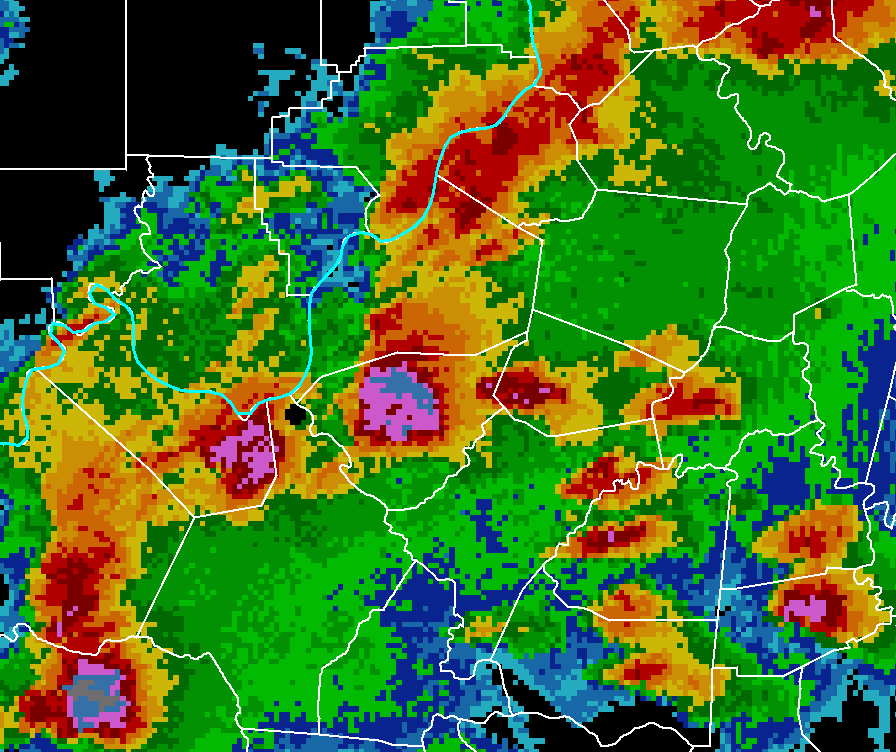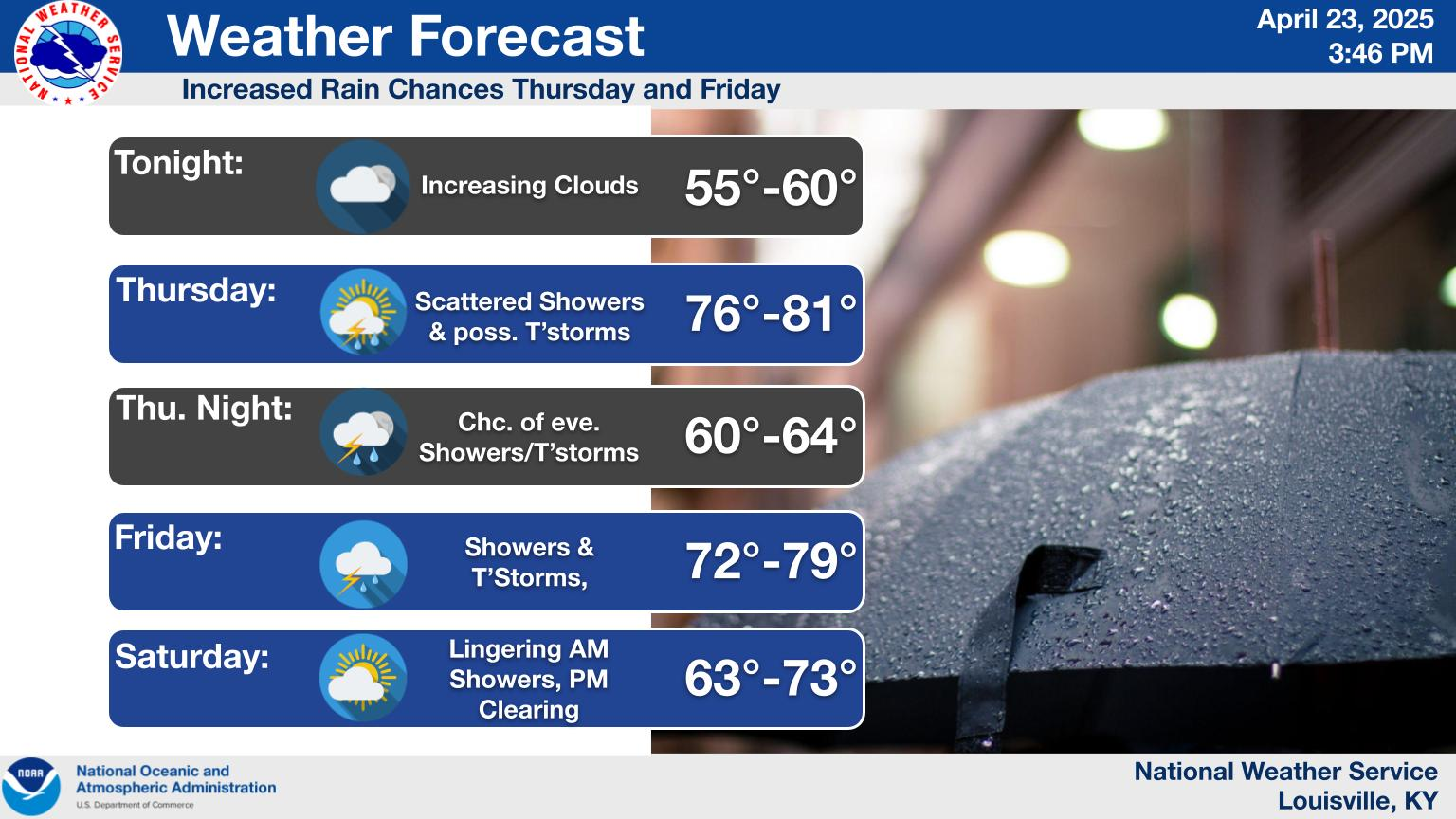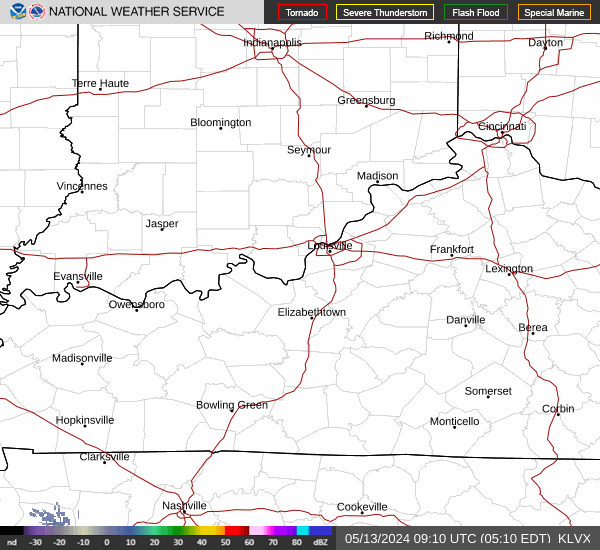Louisville, KY
Weather Forecast Office
 |
While base reflectivity data shows the location and intensity of precipitation at one radar elevation angle (i.e., one plane or "cut" through the atmosphere), "composite reflectivity" (CR) shows the location and highest reflectivity values from all elevation angles (as many as 14 per volume scan) employed by the Doppler radar. In other words, CR is useful to determine the maximum reflectivity value within a thunderstorm without regard to the maximum's vertical location. It also can help identify elevated or suspended high reflectivity cores when used in conjunction with low-level base reflectivity. Large elevated cores can be associated with subsequent hail or strong winds at the surface after the core descends. In this image, numerous thunderstorms were present on March 2, 2012 over central Kentucky. Red and pink colors represent high CR values within these storms, with the highest values in blue and gray shades within the storms near the center and lower left parts of the image. |
Current Hazards
Hazardous Weather Outlook
Storm Prediction Center
Submit a Storm Report
Advisory/Warning Criteria
Radar
Fort Knox
Evansville
Fort Campbell
Nashville
Jackson
Wilmington
Latest Forecasts
El Nino and La Nina
Climate Prediction
Central U.S. Weather Stories
1-Stop Winter Forecast
Aviation
Spot Request
Air Quality
Fire Weather
Recreation Forecasts
1-Stop Drought
Event Ready
1-Stop Severe Forecast
Past Weather
Climate Graphs
1-Stop Climate
CoCoRaHS
Local Climate Pages
Tornado History
Past Derby/Oaks/Thunder Weather
Football Weather
Local Information
About the NWS
Forecast Discussion
Items of Interest
Spotter Training
Regional Weather Map
Decision Support Page
Text Products
Science and Technology
Outreach
LMK Warning Area
About Our Office
Station History
Hazardous Weather Outlook
Local Climate Page
Tornado Machine Plans
Weather Enterprise Resources
US Dept of Commerce
National Oceanic and Atmospheric Administration
National Weather Service
Louisville, KY
6201 Theiler Lane
Louisville, KY 40229-1476
502-969-8842
Comments? Questions? Please Contact Us.


 Weather Story
Weather Story Weather Map
Weather Map Local Radar
Local Radar